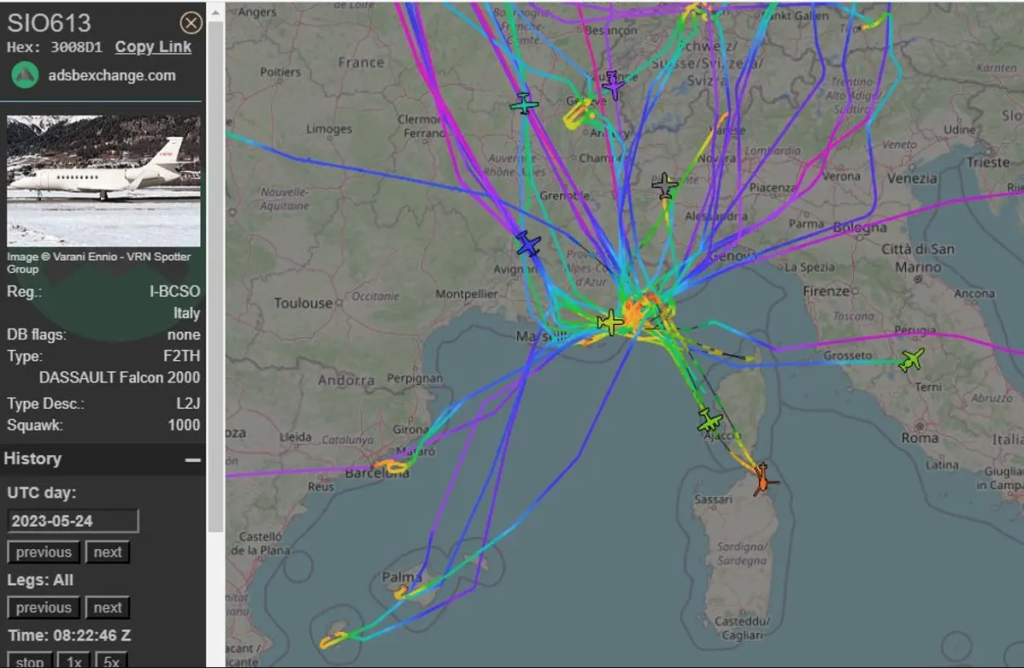Each flight generates on average 5.9 tco2eq, like a car in a whole year
– Private jets must also play their part in reducing CO2. That is why Brussels should come up with a regulation that obliges them to cut greenhouse gases, as is the case for the rest of the civil aviation sector. All the more so because private jet emissions generate “a disproportionate environmental impact” per passenger per kilometre.
Austria, France, Ireland and the Netherlands support this in an internal document prepared for the next Transport Council meeting on 1 June. Where for the first time could come into question the dossier of private jet emissions, so far never touched by the European legislator.
How much do private jet emissions weigh?
In January 2022, one in 10 participants went to the World Economic Forum in Davos by private plane. Over a thousand flights, which alone generated the same emissions of 350 thousand cars. In half of the cases the flight was shorter than 700 km, a distance easily accessible by train or car. These figures, calculated by Greenpeace and the EC Delft, are sufficient to begin to understand the proposed orders of magnitude of private jet emissions.
They are in effect one of the most polluting means on the planet. They generate 50 times more emissions per passenger per kilometre than the train (using European average parameters as a reference). And they pollute an order of magnitude even more than traditional scheduled flights: they emit 10 times more greenhouse gases. In absolute terms, one hour of flight produces about 2.2 tons of CO2 equivalent, about 1/3 of the total emissions generated per capita in Europe (that is 6.8 tco2eq in 2019).
The bad record of Italy
Last year the flights with private jets are returned again to grow strongly after the fall of 2020 with a sound +64%. Over 572 thousand flights that, on average, have generated 5.9 tCO2eq. In practice, each private jet, per trip, has polluted like a petrol car that travels for 23 thousand km, more or less the average distance of a European in a year. Italy is among the worst in Europe: it is placed in 4 places, in a year the flights grew by 62% at 55 thousand and emissions have doubled.
Read also Do aviation biofuels really reduce emissions?
The dossier in Brussels
The data are there, the impact is known, but so far no measures have been taken at EU level. “We believe that more attention should be paid to this issue at European level, in particular by considering the possibility of introducing stricter regulatory measures on private jet travel to ensure that everyone contributes in a fair way to the overall decarbonisation effort“, reads in the document that will be discussed to the Transport Council and anticipated from Reuters.
“This form of air transport has an excessive per capita carbon footprint and has been the subject of increasing public criticism,” the text continues. Last but not least, the criticism also concerns social aspects, as well as environmental aspects. In fact, private jets are used by a very small population, super-rich and VIP in general. A confirmation of the disproportion between the CO2 footprint of the different income bands and the very high specific gravity of those of the most affluent.

